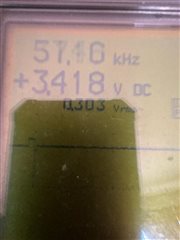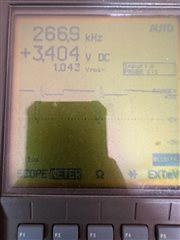Good day
We have our own PCB making use of bq25570, I need to get at least 3.3V output with 200mA pulse current.
I did use the calculator and with the component values selected, I can only reach 2.5 V, which is to low to drive the module That I will be using this for.
Trust you could give advice on what I may have missed.




